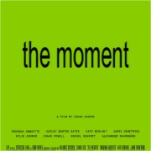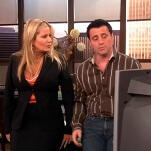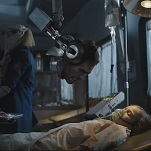That’s not an ironic title. Teenage examines nothing less than the invention of teenage identity, which, it turns out, is hardly an age-old phenomenon. Prior to the 20th century, the film argues, life was seen as a split between childhood and adulthood; the concept of the teenager grew in tandem with the proliferation of anti–child labor laws. Based on punk-rock chronicler Jon Savage’s book Teenage: The Creation Of Youth Culture, the movie sticks largely to the period spanning the buildup to the first world war through the end of the second, focusing on America, Britain, and Germany. The narrators include Jena Malone and Ben Whishaw; the footage is a mix of archival and faux-archival material.
If Teenage has an overarching argument, it’s that the refinement of what constituted “adolescence” went hand-in-hand with new developments in militarism. No sooner were the concepts of youthful rebellion and aimlessness identified than the Boy Scouts were formed as a regimented alternative. Director Matt Wolf includes clips that highlight contemporaneously recognized parallels between the Hitler Youth and the New Deal’s Civilian Conservation Corps. The film also examines the way the Nazis exploited the appeal kids saw in rebelling against their parents, initially branding party activities as cool, clubby alternatives to the norm before making conscription in the Hitler Youth mandatory. On a macro level, Teenage subscribes to the notion that anti-establishment tendencies inevitably become mainstream, tracing the way America’s self-styled outsiders became a coveted demographic among advertisers.
From an aesthetic standpoint, Teenage can be suspect. That’s an actress playing British socialite Brenda Dean Paul, for instance, in anachronistic 8mm color footage. While Wolf’s seamless blend of real and fake images emphasizes the notion that history is a construct, it also renders the movie conceptually incoherent—the cinematic equivalent of a term paper whose author hasn’t assembled the necessary source material to craft a complete argument. Teenage occasionally suggests a newsreel that’s been intercut with a Guy Maddin film.
Likewise, the voiceover—some of it taken from real accounts, yet often in a grating first-person plural—tends toward rhetorical overkill. To mark tumult in the flapper movement: “We were all crashing—and then the whole world did, too.” (Cut to: 1929.) “This is a story that ends with a beginning,” Malone declares at the conclusion, over a shot of a mushroom cloud. Although the movie makes room for uprisings in Harlem and the Zoot Suit Riots in L.A., it still feels superficial at 77 minutes. This is not just the tale of a generation but that of an entire age bracket, whose name, the movie implies, hadn’t even been coined at the time Judy Garland warbled, “I’m just an in-between.” Like adolescence itself, Teenage is educational, scattered, and over much too quickly.








































